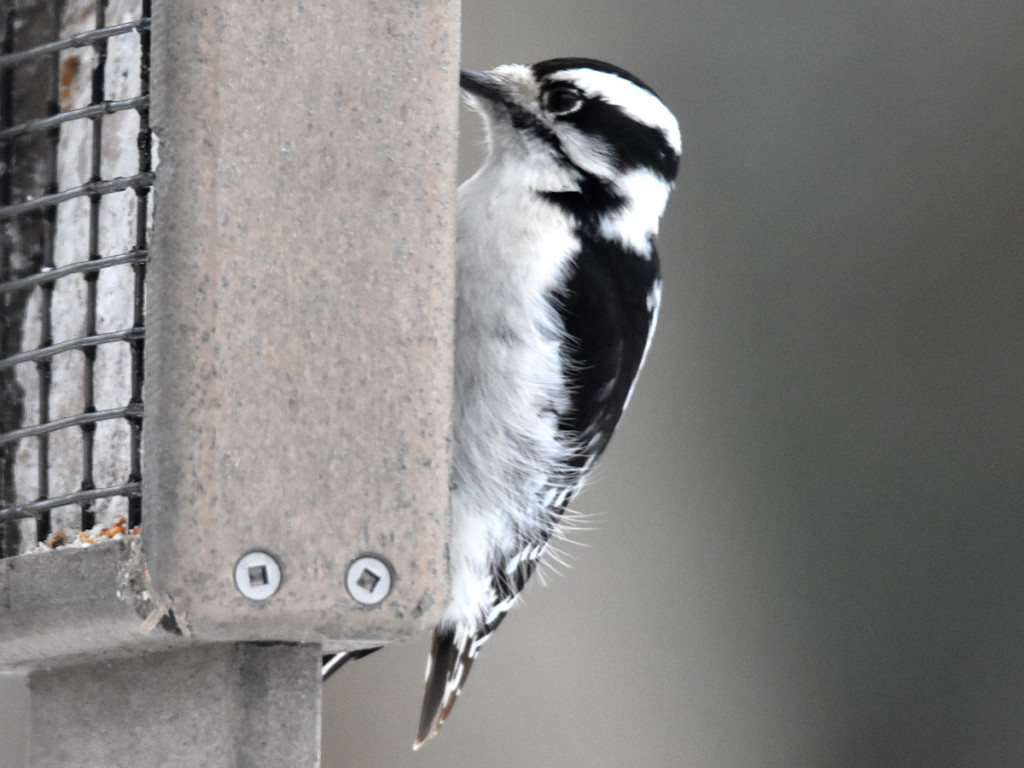
Downy Woodpecker
IDENTIFICATION
The Downy Woodpecker is our smallest woodpecker. Downys have a black and white spotted appearance with a white belly. The male has a red spot on the back of his head whereas females do not. This woodpecker has a mostly black tail with white outer feathers. These outer white tail feathers will often show black spots on Downy Woodpeckers. The Downy uses its strong, chisel-shaped bill to excavate wood in search of dinner and to make a nest cavity.
ATTRACTING
The diet of the Downy Woodpecker consists mostly of insects, even in the wintertime. The woodpecker’s common method of searching within tree bark for bugs is well known though they will also eat berries and nuts if available. A suet feeder or peanut feeder is a great way to entice woodpeckers to a backyard feeding station and they will occasionally come to a feeder stocked with a mix containing sunflower chips or peanuts. A log suet feeder works great not only for Downies and other woodpeckers, but chickadees and nuthatches as well.
Hairy Woodpecker
IDENTIFICATION
Hairy Woodpeckers are black and white with a white belly. The male has a red spot on the back of his head whereas the female does not. This woodpecker has a mostly black tail with white outer tail feathers. Hairy Woodpeckers do not have spots on these white tail feathers, unlike the Downy Woodpecker. The Hairy has a large, strong bill used for chiseling into wood.
DIET
The diet of the Hairy Woodpecker consists mostly of insects, even in the wintertime. The woodpecker’s common method of searching within tree bark for bugs is well known though they will also eat berries and nuts if available. A suet feeder or peanut feeder is a great way to entice woodpeckers to a backyard feeding station and they will occasionally come to a feeder stocked with a mix containing sunflower chips or peanuts. A log suet feeder works great for Hairys and other woodpeckers, and chickadees and nuthatches as well.
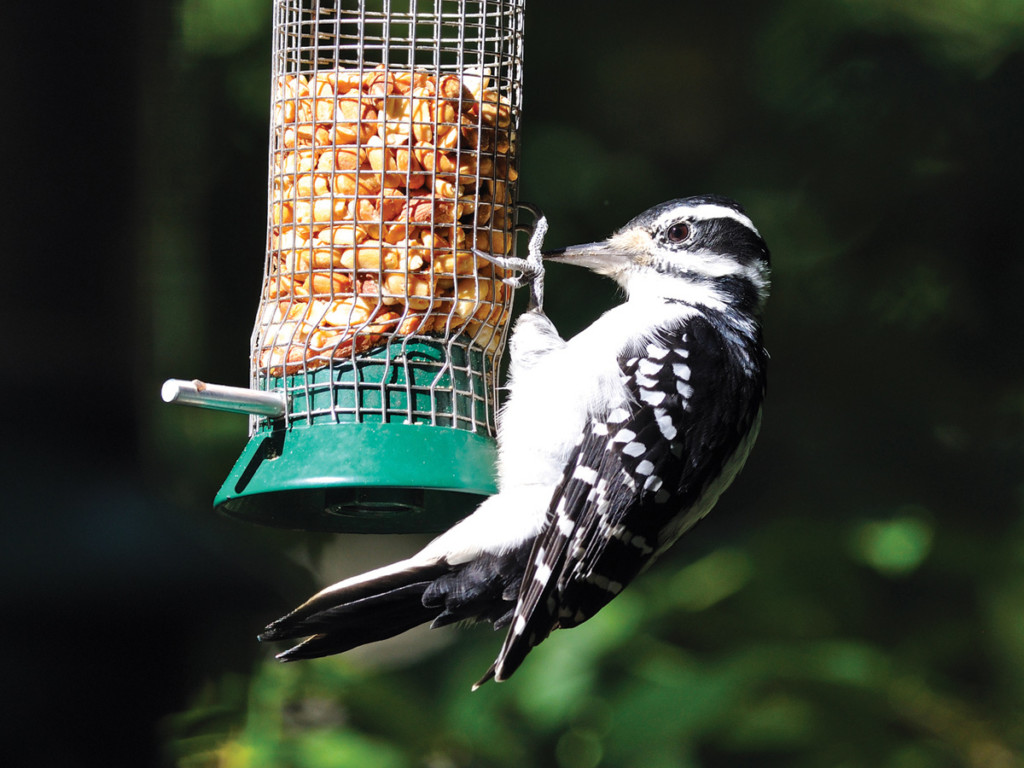
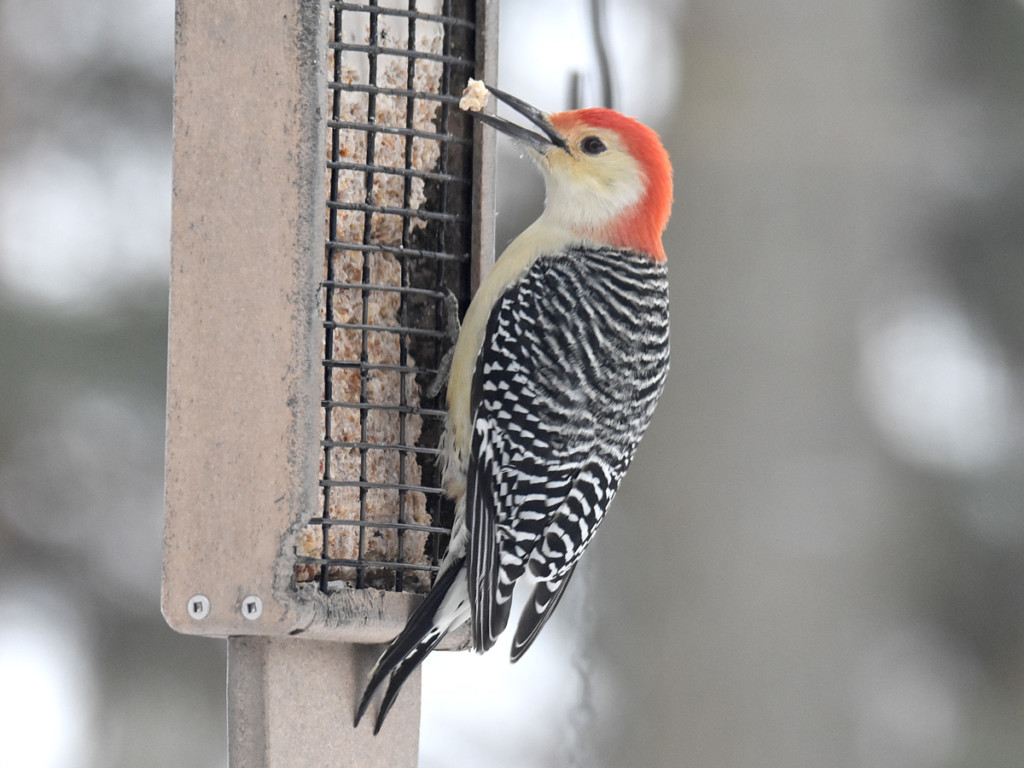
Red-Bellied Woodpecker
IDENTIFICATION
The Red-bellied Woodpecker is a long billed, heavy bodied woodpecker. They are between 9-10″ in length. The head has a red “mohawk” on a cream-colored face. The male’s red cap extends all the way from the forehead at the base of the bill to the back of the neck, while the female only has red on the back of the head. The Red-belly’s back is black with fine white barring with a matching pattern on the tail. The underparts are the same creamy color as the face. This woodpecker has a deeply undulating flight.
DIET
Like other woodpeckers the Red-bellied spends a lot of time foraging for insects in or under tree bark, even during the winter. They will eat berries and tree nuts when they are available. Red-bellieds will frequent suet feeders and peanut feeders year-round. They’ll even pull sunflower seeds from Magnum style feeders and visit fly-thru feeders full of Joe’s Mix or any sunflower seed mix.
Because of their large size, Red-bellieds prefer larger suet feeders and a log suet feeder is a great way of drawing them to you yard.
Pileated Woodpecker
IDENTIFICATION
The Pileated Woodpecker is the largest black and white woodpecker in the United States . These birds are nearly the size of a crow with a 30” wingspan. The most obvious feature of the Pileated Woodpecker is its large, red crest. On males the crest is totally red but on females the crest is dark on the forehead and only red toward the top and back of the head. (yes, Woody Woodpecker was modeled after these beautiful birds. There are black and white markings on the face, starting at the very large bill and extending down the side of the neck. Males have a red “mustache” whereas females do not. The body is all black with a long tail. In flight the wings show white linings. The size and prominent crest of Pileateds make them hard to miss.
DIET
Insects, especially carpenter ants, make up toe majority of the Pileated Woodpecker’s diet. Their powerful bill allows them to excavate deep into tree bark and heartwood to find insects even in the dead of winter. They will also forage on nuts and berries when they are available. Having a Pileated come to a suet feeder is a great experience. These large birds really prefer to use larger style feeders. Use a double suet cage, or a cage with a “tail prop” so the birds can use their tails to balance like they would on a tree trunk. A log suet feeder also works great if you are being visited by a Pileated Woodpecker.
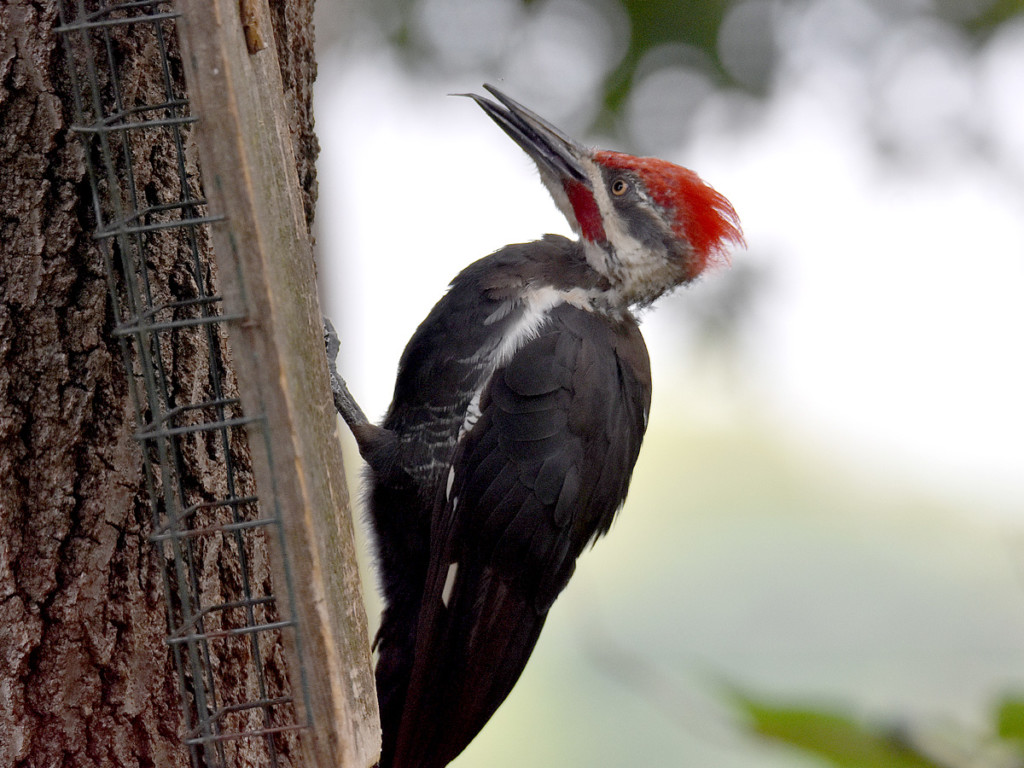
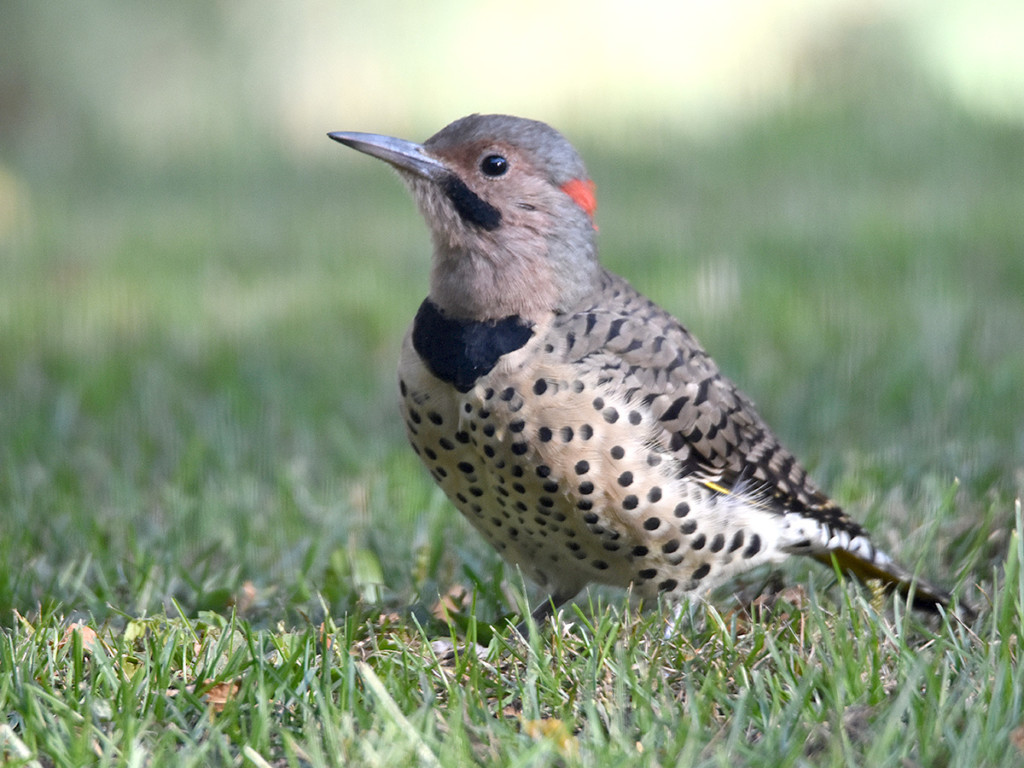
Northern Flicker
IDENTIFICATION
This medium-sized (12″) woodpecker is mostly brown with a black necklace and mustache, speckled breast and a bright red spot on the back of its neck. The Northern Flicker is the only brown-backed woodpecker found in Minnesota.
DIET
Northern Flickers eat insects, especially ants and beetles it plucks from the ground. Their special saliva protects them from ants’ acidic defenses. Flickers will visit suet feeders and may also dine on mealworms, fruit and nut blends at feeding stations.

